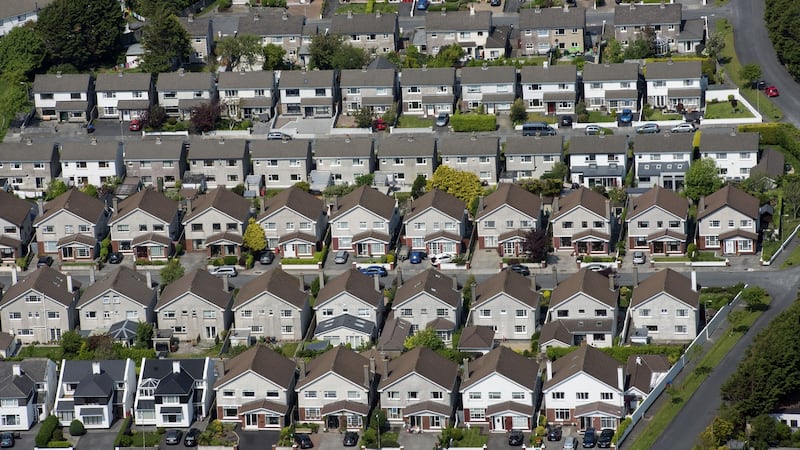During last week's TV debate between Taoiseach and Fine Gael leader Leo Varadkar and his Fianna Fáil counterpart Micheál Martin, housing was unsurprisingly one of the issues that took centre stage.
While discussing how they would help first-time buyers – and amid charges of “auction politics” – the Taoiseach and Martin had an exchange about the levels of home ownership.
Martin claimed “we have the lowest level of home ownership in this country since 1971, and that’s, in my view, something you [the Government] contributed to creating”.
Mid-way through this sentence, Varadkar cut in to tell moderator Pat Kenny: "Those numbers are disputed, by the way."
So, this exchange has produced two claims.
The first is Martin’s claim that the rate of home ownership has sunk to its lowest level since 1971, with an associated claim that the Government has contributed to creating that. The second is the Taoiseach’s competing claim that those numbers are disputed.

Upon what are they basing their claims?
Asked for evidence to back up the claim, the Fianna Fáil press office provided a link to Central Statistics Office (CSO) figures on changes in rent, home ownership and mortgages based on the results of the 2016 census; the key finding is indeed that home-ownership rates are falling.
Fine Gael, when asked to substantiate the Taoiseach’s claim, said that Varadkar was disputing Fianna Fáil’s assertion “that the decline in home ownership is directly linked to Fine Gael”. A spokesman for the party said that CSO data shows the biggest drop in home ownership was between 2006 and 2011, “when Fianna Fáil was in power and when record numbers of homes were being built”.
Is this correct?
The headline figure for the level of home ownership supports Martin’s contention that it is at its lowest level since 1971.
Indeed, the CSO’s own statement publicising the 2016 census results flags that the home-ownership rate dropped “from 69.7 per cent to 67.6 per cent, a rate last seen in 1971”.
From 1961, the earliest year for which the CSO has published figures, to 1991, home ownership was on the rise, from 59.8 per cent to 79.3 per cent respectively. This is unsurprising as much of the social policy of the State during the 20th century was focused on encouraging home ownership through a range of policy interventions, including council-house purchase, low-cost grants, tax breaks and loans.
So while the headline figure is as Fianna Fáil claims, it's worth pointing out that home ownership actually dipped below the 1971 level in 2011 – the year in which Fine Gael under Enda Kenny took power – so this occurred under Fianna Fáil's watch, and declined further under the last two governments.
There is also merit in Fine Gael pointing out that the sharpest decline occurred during years when Fianna Fáil were in power, from 2006 to 2011.
During this period, from the peak of the Celtic Tiger almost to the trough of the recession, home-ownership rates dropped from 74.7 per cent to 69.7 per cent.
There are some nuances as you delve deeper into the statistics, especially the deviation between urban and rural figures.
For the state overall, home-ownership rates may be below 1971 levels, but when you look at figures for urban ownership, they are significantly higher in 2016 (59.2 per cent) than in 1971 (55.6 per cent); though it has declined since the 1991 peak of 73.2 per cent.
In 1971 in rural Ireland, the rate of home ownership was 85.6 per cent, whereas in 2016, the rate had fallen to 82.4 per cent.
Verdict
Given what was said on the night, it’s clear that the data from the CSO supports Martin’s contention that home ownership is at its lowest level since 1971.
His associated claim that the Government has contributed to creating the low levels of home ownership is true in the narrow sense that everyone in political power contributes to outcomes of policy choices; by that standard, we have to look at who was in power during the period of decline.
The sharpest declines in the rate of home ownership occurred under Fianna Fáil.
As much of the decline occurred before Fine Gael were in power, it’s dubious to assign too much blame to the party, and even more when it comes to Varadkar, who has only been Taoiseach since 2017.
Also, it must be considered that Fianna Fáil were in government for all but three of the years that followed the statistical peak in 1991, until the rate fell below 1971 levels in 2011.
Therefore, we find that Martin’s claim is partially true.
Conversely, we could find no evidence that the figures offered by Martin on home ownership are disputed, as Varadkar claimed.
A Fine Gael spokesman argued that the Taoiseach was disputing that the decline in home ownership is directly linked to Fine Gael, but that was not made clear during the debate, he merely asserted that they are disputed.
Given how an ordinary viewer of the debate would have understood the facts based on how they were argued during the debate, we find that the Taoiseach’s claim is untrue.














